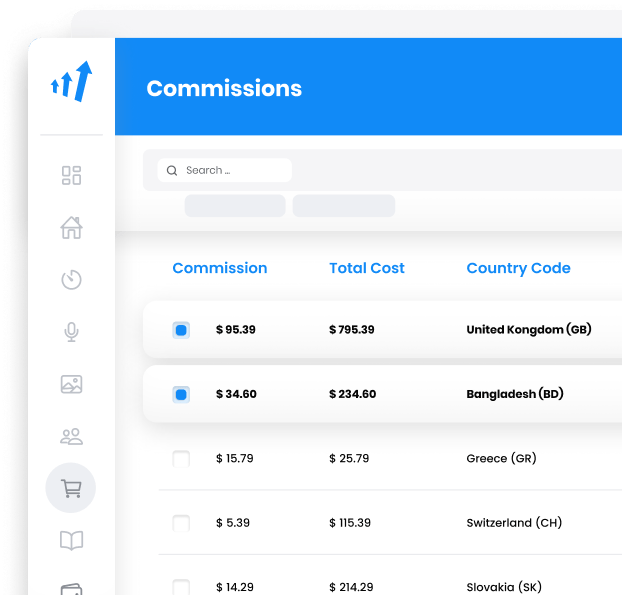What is cost per click?
Another prototype of payment for promoting a product is Cost Per Click. Affiliates transfer traffic into merchant’s site and in this Cost per click model, they earn money from each click on their banners, text links or other advertising materials. Visitors are then transferred to merchant’s site.
This cost is a typical merchant’s expense for a single click to his company’s site through advertisement.

How cost per click works
The Cost Per Click (CPC) model is a popular method used in digital advertising and affiliate marketing to determine how affiliates are compensated for promoting products or services. In the CPC model, affiliates earn money based on the number of clicks their promotional materials receive. Here’s how the cost per click model works:
- Affiliate promotion: Affiliates, also known as publishers, partner with merchants or advertisers to promote their products or services. They use various advertising materials such as banners, text links, display ads, or other creatives to drive traffic to the merchant’s website.
- Click tracking: Each promotional material contains a unique affiliate link that is associated with the affiliate’s account. When a user clicks on one of these affiliate links, it redirects them to the merchant’s website.
- Affiliate earnings: Affiliate earns money for every click their promotional materials generate. The amount earned per click is predetermined and agreed upon by the affiliate and the merchant. The earnings are typically a fixed rate per click and are not dependent on whether the user makes a purchase or completes any other specific action on the merchant’s site.
- Cost for merchants: From the merchant’s perspective, the CPC model represents a cost incurred for each click received through the affiliate’s efforts. This cost is a typical expense for driving traffic to the merchant’s website through advertisements. Merchants must assess the effectiveness of their CPC campaigns and ensure that the quality of the traffic brought in by affiliates justifies the expenditure.
- Click through rates (CTR): Click through rate is a crucial metric in the CPC model, measuring the percentage of users who click on an affiliate’s link out of the total number of users who view the promotional material. A higher CTR indicates better engagement and effectiveness of the affiliate’s content.
- Balancing CPC with other models: Affiliate marketers often use a combination of payment models, including cost per sale (CPS) or cost per action (CPA), depending on the merchant’s goals and the affiliate’s strategy. Diversifying payment structures allows affiliates to cater to different merchants and optimize their earnings.

Frequently Asked Questions
Why is cost per click important?
Cost per click is important because it is a metric that is used to determine how much an advertiser pays for each click on their ad.
How can I calculate my cost per click?
The most common way to calculate cost per click is to take the total cost of the campaign and divide it by the number of clicks.
How is CPC determined?
CPC is determined by the amount of money an advertiser is willing to pay for each click on their ad.
Discover Post Affiliate Pro's flexible pricing plans tailored to fit your business needs, with options for Pro, Ultimate, and Network packages. Enjoy a free trial with no credit card required, no setup fees, and the freedom to cancel anytime. Benefit from features like unlimited affiliates, advanced reporting, customizable interfaces, and lifetime support. Save up to 20% with annual billing and take advantage of more than 220 integrations. Perfect for businesses seeking to enhance their affiliate marketing efforts. Visit now to find the ideal plan for you!
The leader in Affiliate software
Post Affiliate Pro offers a comprehensive affiliate software platform to manage multiple affiliate programs with ease. Enjoy no setup fees, 24/7 customer support, and a free 1-month trial. Ideal for small and large businesses, it features precise tracking, automated workflows, and customizable tools to boost your affiliate marketing success. Try it now and streamline your affiliate operations effortlessly!
The Ultimate List Of Affiliate Programs – Part 1/2
Discover the ultimate list of top affiliate programs to boost your income effortlessly. Whether you're a blogger or a website owner, explore diverse options and find the perfect match for your niche. Start your affiliate journey with our comprehensive guide!
A guide to different types of affiliate tracking
Explore the comprehensive guide on affiliate tracking methods like cookie, postback URL, and IP tracking to optimize your affiliate marketing strategy. Learn how Post Affiliate Pro's advanced software ensures precise tracking, maximizes sales, and provides exceptional support for seamless affiliate cooperation. Unlock your brand's potential with cutting-edge tracking solutions today!
Discover the essential role of affiliate software in managing and optimizing your affiliate marketing programs. Learn how it streamlines link tracking, referral management, and commission payments, ensuring data security and fraud prevention. Unlock growth opportunities with efficient program management and boost your business's reach and ROI. Visit now to explore the benefits of investing in affiliate software!
The 9 Best payment processors for affiliate marketing
Discover the 9 best payment processors for affiliate marketing that ensure secure, flexible, and rapid commission payments. Boost your eCommerce sales by selecting a reliable processor to attract top affiliates and enhance your program. Explore our comprehensive guide to choosing the right payment processor for your affiliate marketing success.










